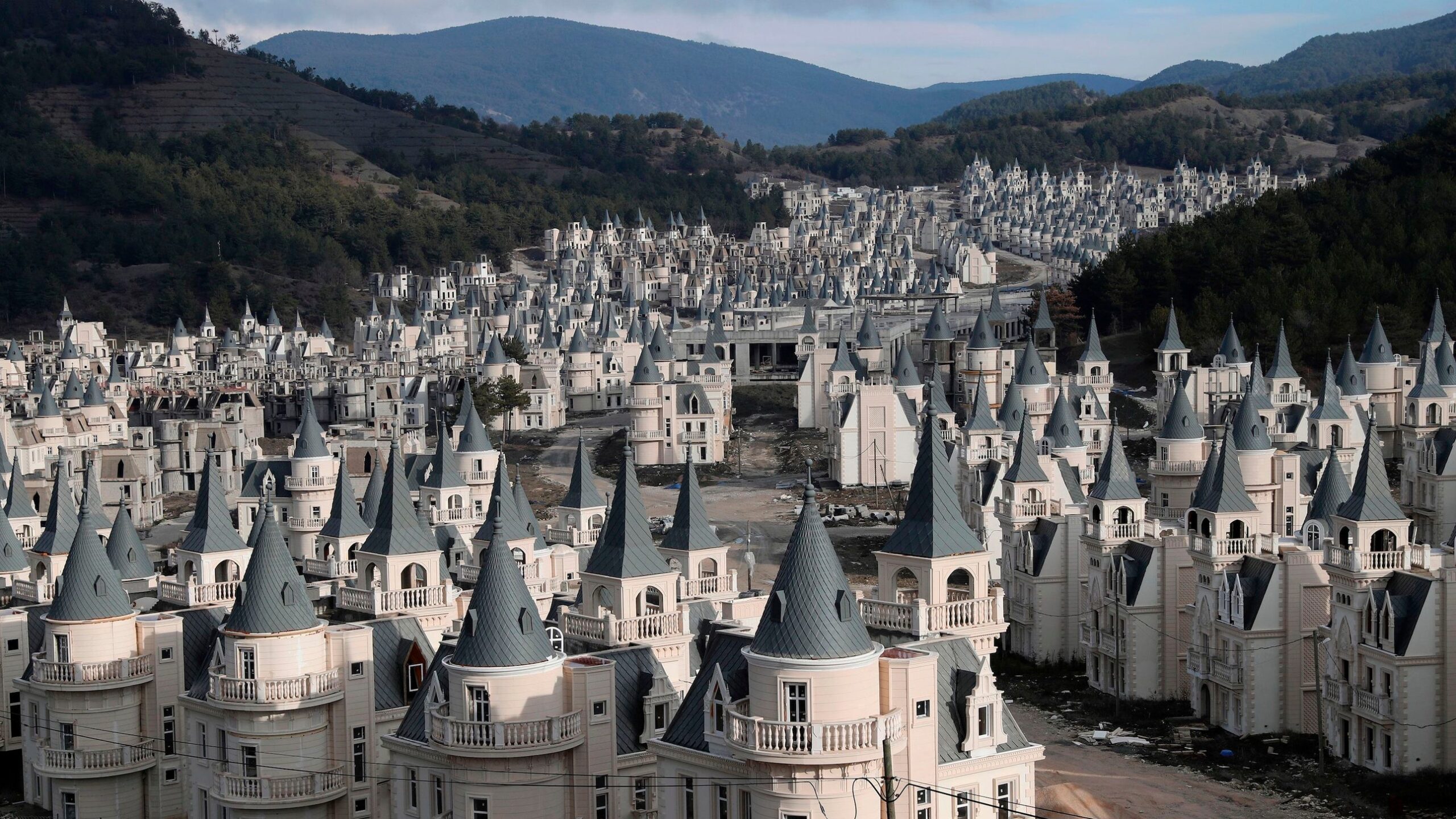If Walt Disney World is the happiest place on Earth, then Burj Al Babas might be the eeriest. Sitting near the Black Sea, the town is full of half-finished, fully abandoned mini castles—587 of them to be exact. Like most ghost towns, this wasn’t how things were supposed to go. In fact, Burj Al Babas was planned as a luxurious, stately urban development offering the look of royal living for anyone willing to shell out anywhere from $370,000 to $500,000 for their own little palace. So how did it become the deserted noir complement to Disney’s Cinderella Castle?
Who built Burj Al Babas?
Burj Al Babas was built by Sarot Properties Group, a luxury developer that had already successfully planned and built two thermal spring hotels in the area. This town was their next act: a collection of European-inspired chateaus for rich Arabs overlooking the Black Sea. Those uninterested in the South of France or the northeastern tip of Spain could enjoy the Mediterranean climate on Gothic-style rooftop terraces overlooking the lush Turkish forest. Not to mention that the spot for the little kingdom had an additional draw. Located in the Roman spa town of Mudurnu, each villa would boast underfloor heating and Jacuzzis on every level. Even in its current state, the vision for Burj Al Babas is still obvious: European luxury in the Middle East.
Why was the Disney castle village abandoned?
Construction started in 2014 and was expected to take four years, though, within that same time, the developers were forced to declare bankruptcy. As building the town got underway, locals became enraged with both the aesthetic of the homes and the business practices of the developers. According to the local news, many were frustrated that the castles didn’t resemble anything in the area, particularly the historical Ottoman-style mansions. A lawsuit against the developers also claimed the company destroyed trees and harmed the environment. Turkey’s economy then struggled in the years after the project started, and developers soon incurred a $27 million debt. A combination of bad choices and bad timing, construction was halted.
Will Burj Al Babas ever be finished?
Even as investors and buyers pulled their money out of the $200 million project in 2019, Sarot Group was confident that it was just a bump in the road and the project would still be completed, according to a report in The New York Times. Of course, the pandemic soon changed life as many knew it, and the project was left abandoned. Though it’s not impossible to say the project could ever resume, it appears unlikely at this point. Architectural Digest did reach out to Sarot Group for comment but has not received a reply at the time of publication.
Can you live in Burj Al Babas?
For now, the manor-dotted valley has become a neighborhood of empty, half-finished shells. With many of the villas started but not one finished, the town remains unlivable. From afar, the gray-roofed neighborhood looks like something out of a Disney movie—perhaps Beauty and the Beast—but, upon closer inspection, Burj Al Babas boasts an eerie postapocalyptic feel with rows of partially completed castles, patchy landscaping, and zero signs of life. The empty village is chilling, to say the least—like a sparkling city ravaged by war.
Can you visit Burj Al Babas?
While you can’t live in the town, it’s reasonable to wonder if you can visit. Though the official answer is no—you won’t find a ticket booth or cotton candy waiting to welcome you into the sprawling attraction—this hasn’t stopped tourists from meandering through the turreted graveyard of half-completed ambition. “Getting there and getting in isn’t the easiest of tasks,” Ilke Opperman, a travel vlogger, said in a video of her visiting the development. She explains that some previous explorers had hiked through the nearby woods to sneak into the neighborhood, though this option wasn’t feasible for her in the middle of winter due to too many feet of snow. Luckily, a guard on duty let them in, though future travelers shouldn’t count on this as normal. “There are building materials everywhere; there is a reason they don’t let people in,” Opperman says in the video. “If you are here, watch where you step, because it’s a construction site with open wiring, so be careful.”

